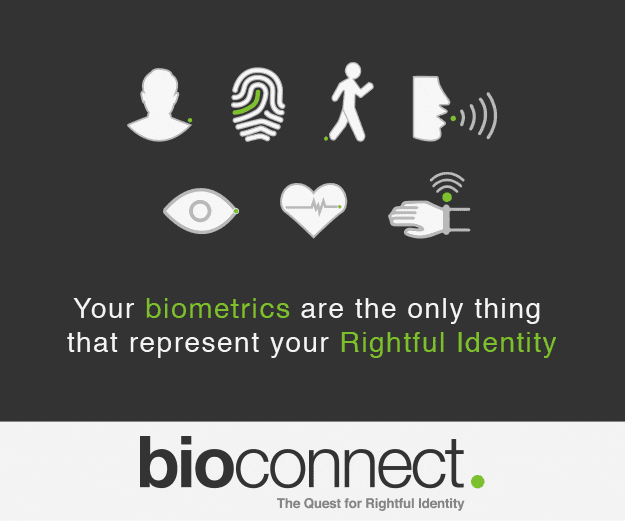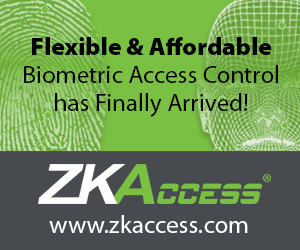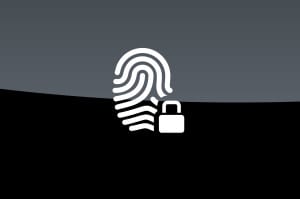—The Webinar Biometrics, Access Control and The Enterprise of Tomorrow is now online | Click here to watch now!—
Biometrics are extremely accessible now thanks to innovations in connectivity and manufacturing that has allowed for high quality identity tech to be acquired and deployed at low cost. Most frequently this level of accessibility is seen in the consumer mobility market, where fingerprint sensors, voice recognition, speech recognition, and even iris recognition are all shipping on smartphones as standard features, but the physical access market is reaping the benefits of biometric proliferation and innovation too.
 Thanks to the availability of easy to buy and use biometric solutions, today’s enterprise is better positioned than ever before to deploy strong authentication based security systems, and what’s more: they don’t have to settle for just one modality. It’s an important distinction, since certain workplaces and certain cultures are more suited for one type of biometric authentication than they are others. Physical access control has become a truly multimodal area of application, and today we are going to see just how diverse the modern market is in terms of variety.
Thanks to the availability of easy to buy and use biometric solutions, today’s enterprise is better positioned than ever before to deploy strong authentication based security systems, and what’s more: they don’t have to settle for just one modality. It’s an important distinction, since certain workplaces and certain cultures are more suited for one type of biometric authentication than they are others. Physical access control has become a truly multimodal area of application, and today we are going to see just how diverse the modern market is in terms of variety.
Here are six different types of biometrics that show how diverse the physical access control identification arena truly is:
- Iris
 Iris recognition has a lot of benefits when it comes to physical access control deployments. It is contactless, fast, and can be used at long distances. If you have a parking facility you want limited for use only by designated employees, today’s iris scanners can authenticate drivers in their cars. Furthermore, the modality’s contactless nature makes it ideal for settings where employees need to wear gloves for safety or hygiene reasons, which would otherwise add friction to solutions that require skin-to-sensor contact.
Iris recognition has a lot of benefits when it comes to physical access control deployments. It is contactless, fast, and can be used at long distances. If you have a parking facility you want limited for use only by designated employees, today’s iris scanners can authenticate drivers in their cars. Furthermore, the modality’s contactless nature makes it ideal for settings where employees need to wear gloves for safety or hygiene reasons, which would otherwise add friction to solutions that require skin-to-sensor contact.
Earlier this year we saw iris biometrics deployed in a physical access capacity at CERN in Geneva, Switzerland. As one of the most important experimental science facilities in the world, housing the famous Large Hadron Collider, CERN needs protection. That’s why it turned to Iris ID. In a longstanding partnership that goes back to 2008, Iris ID has been providing biometric access control tech to CERN for quite some time, and in January the company announced that it deployed 25 new readers to the previously installed 55, bringing CERN up to a total of 80 iris scanners protecting its critical spaces in the name of science.
- Fingerprint
 Fingerprints are a staple of biometrics across most vertical markets, and physical access control is no exception. The range of fingerprint biometric access solutions that are available to today’s enterprise is formidable. Fingerprint scanning terminals, both touch-based and contactless, are ready for deployment, and even integrated smart card solutions featuring embedded fingerprint sensors exist that enable legacy card reading systems to benefit from an easy biometric upgrade.
Fingerprints are a staple of biometrics across most vertical markets, and physical access control is no exception. The range of fingerprint biometric access solutions that are available to today’s enterprise is formidable. Fingerprint scanning terminals, both touch-based and contactless, are ready for deployment, and even integrated smart card solutions featuring embedded fingerprint sensors exist that enable legacy card reading systems to benefit from an easy biometric upgrade.
Because of innovations in the availability of fingerprint biometrics—the same ones that have enabled the massive mobile adoption we see in consumer tech—fingerprint biometrics are even available for the enterprise of one; A home office can be outfitted with plug-and-play fingerprint biometric door locks.
- Face
 Face recognition, much like iris mentioned above, is a contactless modality. What’s more, the modality is software based, and can be deployed in connected cameras and CCTV systems. With the proper considerations, a face recognition based physical access control system can offer seamless security when it comes to opening doors for authorized personnel. Of course, it’s not all just retrofitting cameras with software, the current generation of face recognition terminals sport impressive ease of use, image matching capabilities, and anti-spoofing features.
Face recognition, much like iris mentioned above, is a contactless modality. What’s more, the modality is software based, and can be deployed in connected cameras and CCTV systems. With the proper considerations, a face recognition based physical access control system can offer seamless security when it comes to opening doors for authorized personnel. Of course, it’s not all just retrofitting cameras with software, the current generation of face recognition terminals sport impressive ease of use, image matching capabilities, and anti-spoofing features.
Facial recognition is ideal for high throughput situations and can be deployed in conjunction with turnstiles. Furthermore, the modality has other benefits too, able to match age and gender allowing for more contextual means of access control where either of those characteristics might constitute a restriction.
- Behavioral
 The minutia of our behavior is unique enough to identify us. The way we walk, the way we stand, the way we type—these are unique identifiers that can be used to authenticate us for access, usually in conjunction with another contactless modality.
The minutia of our behavior is unique enough to identify us. The way we walk, the way we stand, the way we type—these are unique identifiers that can be used to authenticate us for access, usually in conjunction with another contactless modality.
Behavioral biometrics are an aspect of FST Biometrics’ IMID (In Motion Identification) platform. Face, voice, and motion pattern biometrics are combined in the system that passively authenticates personnel in a given facility. The technology is robust, even futuristic sounding, but it has already been chosen by the Israel Diamond Exchange for secure entrance to one of its polishing facilities.
- Vascular
 Palm and finger vein patterns have a special reputation in the biometrics industry as difficult, potentially even impossible to spoof. It makes sense, since vein patterns are sub-dermal—difficult to view, let alone clone accurately enough to suffice for a presentation attack. Your circulatory system can’t be captured by HD photography or lifted off of a surface you’ve touched.
Palm and finger vein patterns have a special reputation in the biometrics industry as difficult, potentially even impossible to spoof. It makes sense, since vein patterns are sub-dermal—difficult to view, let alone clone accurately enough to suffice for a presentation attack. Your circulatory system can’t be captured by HD photography or lifted off of a surface you’ve touched.
In physical access, usually you find vascular biometrics protecting areas that contain valuable equipment or materials like laboratories. The technology is now accessible enough however to be leveraged in a multifactor system, with fingerprint/vein readers now available that can simultaneously scan fingerprints and vein patterns.
- Cardiac
 Heartbeat biometrics are an emerging modality when it comes to actual authentication, but no conversation about a wide range of modalities is complete without mention of the cardiac factor. Our vital signs are unique enough to verify our identities, and one of the best suited use cases for this nifty technology is physical access in the enterprise.
Heartbeat biometrics are an emerging modality when it comes to actual authentication, but no conversation about a wide range of modalities is complete without mention of the cardiac factor. Our vital signs are unique enough to verify our identities, and one of the best suited use cases for this nifty technology is physical access in the enterprise.
Nymi, the company behind the eponymous Nymi Band, is aiming to serve this area of application. Combining wearable tech, NFC, and cardiac identification, the Nymi Band offers persistent authentication to wearers and can be leveraged as a contactless biometric key. The solution has been integrated with the BioConnect access control platform, making it well positioned for deployment once the product sees an inevitable commercial launch.
*
Stay posted to FindBiometrics throughout April as we continue to examine physical access and enterprise biometrics in our featured articles section. Be sure to follow us on Twitter so you don’t miss a beat.
Physical Access & Enterprise Month is made possible by our sponsors: BioConnect and ZKAccess.
—
April 20, 2016 – by Peter B. Counter


Follow Us